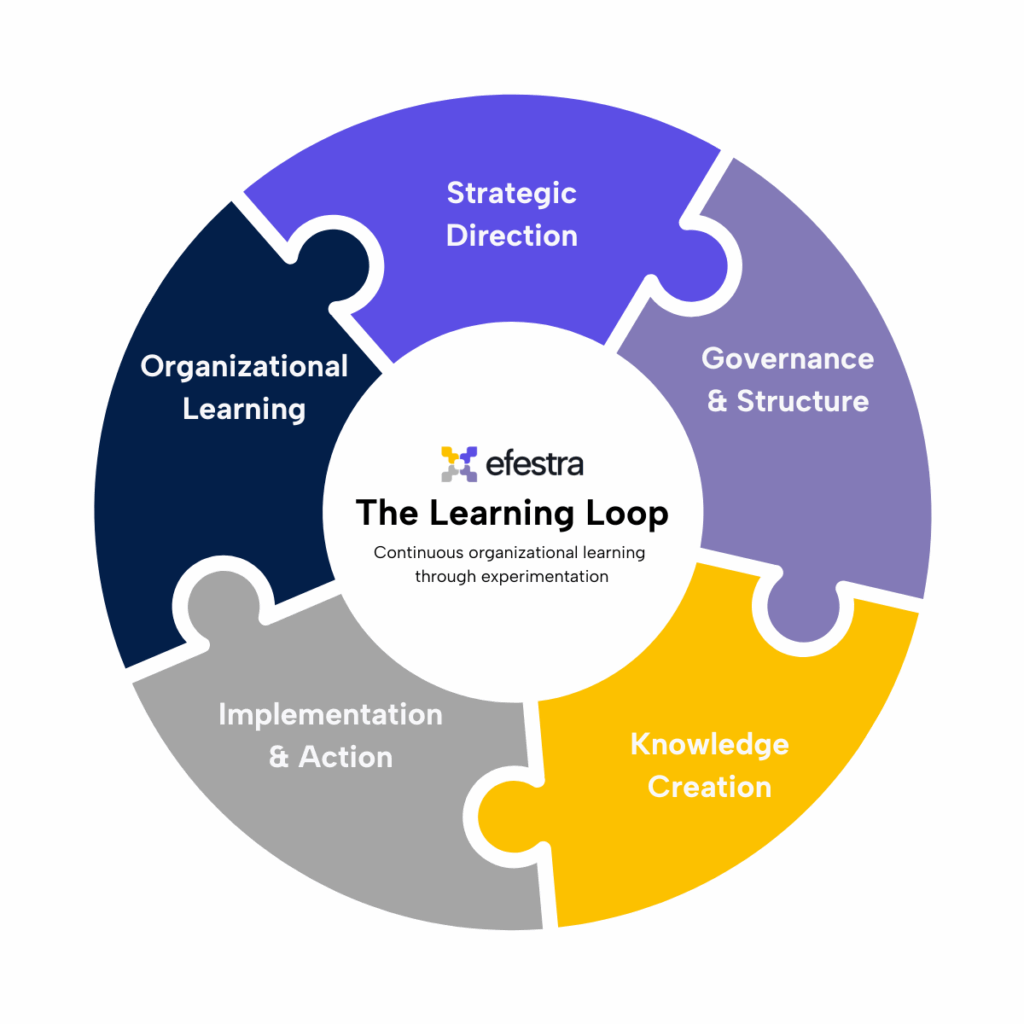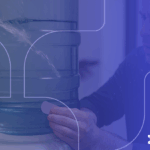
Most experimentation programs operate in a leadership vacuum—and it’s costing organizations millions in unrealized value.
After working with experimentation teams across hundreds of organizations, I’ve observed a troubling pattern: companies invest heavily in testing tools, hire specialized talent, and run dozens of experiments quarterly, yet struggle to translate results into meaningful business impact.
The missing link isn’t better methodology or more sophisticated tools. It’s leadership involvement.
The Hidden Cost of Leadership Disengagement
When leaders remain disconnected from their experimentation programs, several critical failures emerge:
Strategic Misalignment: Teams optimize for metrics that don’t connect to business objectives. Without clear strategic direction, specialists default to tactical improvements—conversion rate tweaks instead of customer acquisition breakthroughs, page optimization instead of product innovation.
Decision Paralysis: Successful experiments sit in limbo because no one has the authority to implement changes that cross departmental boundaries or require significant resource allocation. The average organization fails to implement over 40% of their successful experiments due to unclear decision authority.
Resource Constraints: Teams operate under artificial limitations, unable to test meaningful hypotheses because they lack budget for proper sample sizes or implementation resources. This forces them into small, low-impact experiments that never move the strategic needle.
Success Theater: Without leadership understanding of how experimentation works, teams feel pressure to show artificially high success rates, leading to cherry-picked results and diminished trust in the process.
What Strategic Leadership Looks Like in Practice
Effective experimentation leadership isn’t about micromanaging test designs or second-guessing statistical methods. It’s about creating the strategic framework and organizational conditions where experimentation can deliver maximum value.
Setting Strategic Objectives
Leaders must translate high-level business goals into specific, testable hypotheses. Instead of saying “improve customer acquisition,” effective leaders define success as “reduce customer acquisition cost by 25% while maintaining customer lifetime value.” This specificity gives experimentation teams clear targets and helps them prioritize which tests will have the greatest strategic impact.
Consider how one Chief Product Officer transformed their team’s focus: Rather than letting teams run random A/B tests on interface elements, she established quarterly learning objectives tied directly to the company’s expansion strategy. Teams knew they needed to discover how to increase enterprise customer conversion, reduce time-to-value for new users, and improve retention in specific market segments. Every experiment connected to these strategic imperatives.
Establishing Governance Frameworks
Leadership must create the governance structure that ensures experiment quality while maintaining team autonomy. This means establishing standards for hypothesis formation, defining minimum sample sizes, setting criteria for implementation decisions, and creating processes for knowledge preservation.
But governance isn’t constraint—it’s enablement. When teams understand the quality standards and decision frameworks, they can operate with confidence, knowing their work will be taken seriously and acted upon when results warrant it.
Providing Implementation Authority
Perhaps most critically, leaders must create clear pathways from experimental insights to business decisions. This requires defining who has authority to implement results, establishing resource allocation processes for successful experiments, and creating cross-functional collaboration protocols.
One technology company solved this by instituting “experiment executive sponsors”—senior leaders who championed specific experimental initiatives and committed to implementing results that met predefined success criteria. This eliminated the common scenario where successful experiments die in committee.
Creating Psychological Safety for True Learning
Experimentation only works when teams feel safe to test bold hypotheses—including ones that might fail. Leaders must explicitly communicate that the goal isn’t to prove every test successful, but to generate reliable insights that inform strategic decisions.
This means celebrating high-quality experiments that produce clear negative results, recognizing teams for rigorous methodology rather than just positive outcomes, and protecting experimenters from political consequences when tests challenge existing assumptions or reveal uncomfortable truths about current strategies.
When leaders create this psychological safety, teams shift from optimizing for success rates to optimizing for learning velocity. They test bigger, bolder hypotheses that can produce breakthrough insights rather than incremental improvements.
The Bandwidth and Resource Reality
Strategic experimentation requires adequate resources—not just budget for tools, but time for proper experimental design, sufficient traffic for statistical significance, and development resources for implementation. Leaders must ensure teams aren’t forced to compromise experimental rigor due to artificial constraints.
This often means defending experimentation resources during budget discussions, advocating for longer-term thinking when experiments require extended run times, and ensuring teams have access to the technical and analytical support needed for complex tests.
The Learning Loop Leadership Model

Effective experimentation leadership creates what we call the Learning Loop—a complete cycle where strategic objectives inform experimentation, experiments generate reliable insights, insights drive business decisions, and outcomes feed back into strategic planning.
Leaders play essential roles at each stage:
Strategic Direction: Setting clear, measurable objectives that connect to business outcomes
Governance Structure: Establishing quality standards that ensure reliable results
Decision Authority: Creating clear pathways from insights to implementation
Resource Allocation: Providing adequate bandwidth and budget for meaningful tests
Knowledge Integration: Ensuring insights inform future strategic planning
When leaders actively participate in this loop, experimentation transforms from a tactical activity to a strategic capability.
Breaking the Experimentation Echo Chamber
Too often, experimentation becomes an echo chamber where specialists talk only to other specialists, using technical language that doesn’t resonate with business decision-makers. Leaders must bridge this communication gap by asking for insights in business terms, connecting experimental results to strategic outcomes, and translating findings into actionable business intelligence.
This requires leaders to develop basic experimentation literacy—not to become statisticians, but to understand how to interpret results, ask meaningful questions about methodology, and connect experimental insights to business strategy.
The ROI of Leadership Involvement
Organizations with actively engaged leadership in their experimentation programs see dramatically different outcomes:
- 3.4x higher implementation rates for successful experiments
- 68% better strategic alignment of testing activities
- 76% improvement in overall program ROI
- 42% reduction in duplicated experimental efforts
These improvements stem directly from leadership providing strategic direction, governance frameworks, implementation authority, and adequate resources.
Getting Started: The Leadership Experimentation Audit
Leaders can begin improving their experimentation involvement by asking five critical questions:
- Strategic Alignment: Do our experiments connect directly to business objectives, or are teams optimizing for metrics that don’t drive strategic value?
- Decision Authority: When experiments produce actionable insights, is there a clear process for implementation, or do results disappear into committee discussions?
- Resource Adequacy: Do teams have sufficient budget, time, and technical resources to test meaningful hypotheses, or are they forced into low-impact experiments?
- Psychological Safety: Do teams feel comfortable testing bold hypotheses that might fail, or are they optimizing for artificial success rates?
- Knowledge Integration: Do experimental insights inform strategic planning and future decision-making, or do learnings remain isolated within the testing team?
The Strategic Imperative
Competitive advantage comes from learning faster than competitors, experimentation represents a critical organizational capability. But like any capability, it requires proper leadership to realize its full potential.
The companies that will dominate the next decade won’t just be those with the best products or the most resources—they’ll be those that learn and adapt fastest. And that learning happens through well-governed, strategically-aligned experimentation programs led by engaged executives.
The question isn’t whether your organization should be experimenting—it’s whether your leadership is creating the conditions for experimentation to drive strategic value.
Your experimentation team has the expertise to run reliable tests. But only leadership can ensure those tests answer the right strategic questions and that insights translate into competitive advantage.
The time for experimentation theater is over. Strategic experimentation—with proper leadership involvement—is where the real value lies.




